Pangunahing impormasyon
 Japan
JapanKalidad
 Japan
|
15-20 taon
|
Japan
|
15-20 taon
| https://www.mito.co.jp/
Website
Marka ng Indeks
Impluwensiya
C
Index ng impluwensya NO.1
 Japan 6.03
Japan 6.03 Mga Lisensya
Mga LisensyaMga Lisensya na Mga Institusyon:水戸証券株式会社
Regulasyon ng Lisensya Blg.:関東財務局長(金商)第181号
solong core
1G
40G
1M*ADSL
 Japan
Japan




| MITOBuod ng Pagsusuri | |
| Itinatag | 1997 |
| Nakarehistrong Bansa/Rehiyon | Hapon |
| Regulasyon | FSA |
| Mga Kasangkapan sa Merkado | Stock, Bond, ETF |
| Demo Account | ❌ |
| Platform ng Paggawa ng Kalakalan | MITO Mga Serbisyong Multichannel, MITO Web |
| Suporta sa Customer | Tel: 0120-310-273 |
MITO, isang kumpanyang pang-serbisyong pinansiyal na nakabase sa Hapon na itinatag noong 1997, ay nag-ooperate sa ilalim ng regulasyon ng Financial Services Agency (FSA). Nag-aalok ang kumpanya ng malawak na hanay ng mga pagpipilian sa kalakalan, kabilang ang mga stocks, bonds, at ETFs. Sumasang-ayon sa iba't ibang mga kagustuhan ng mga mamumuhunan.
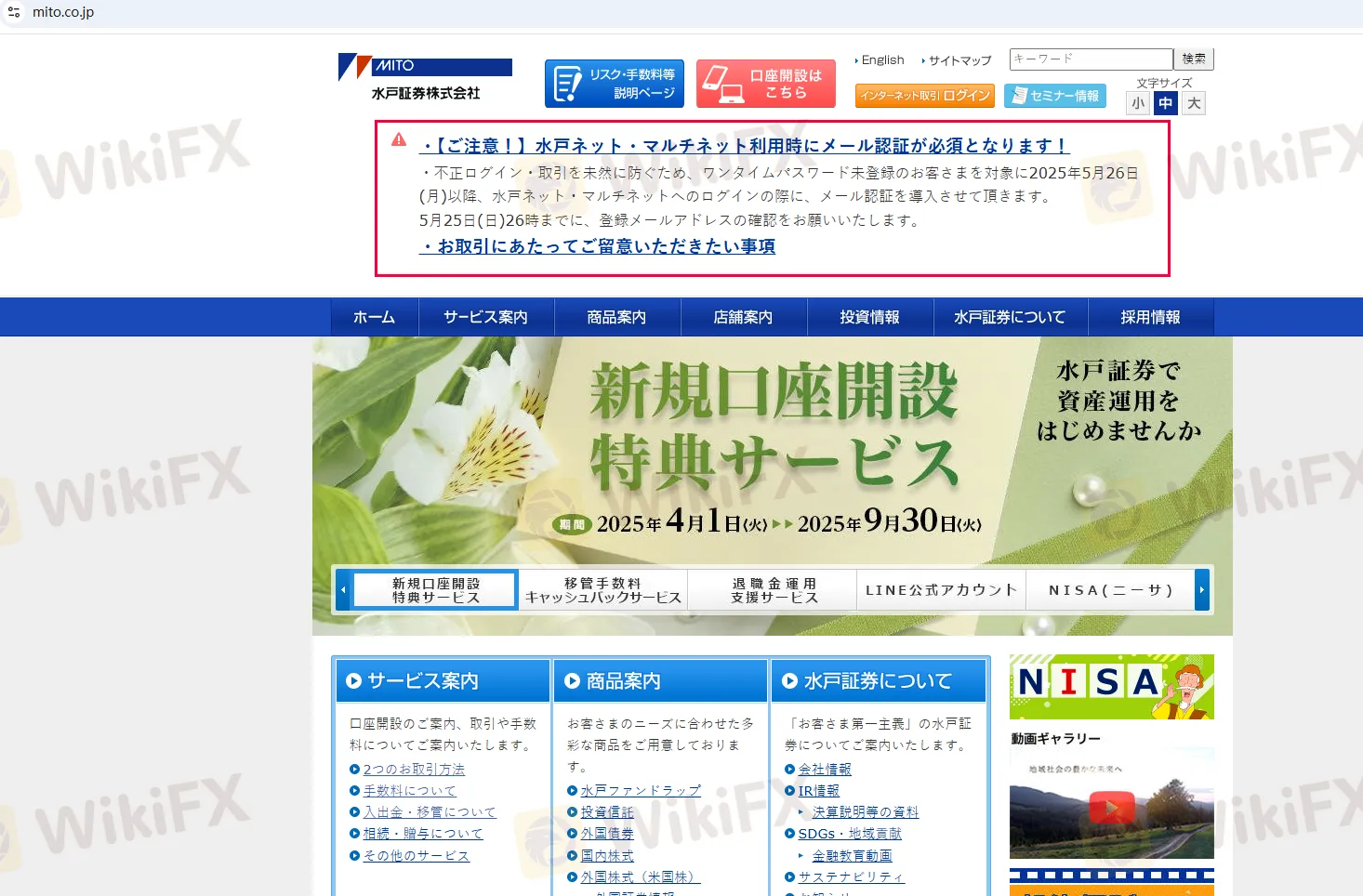
| Mga Kalamangan | Mga Disadvantages |
| regulated | Kakulangan sa mga kasangkapang pangkalakalan |
| Demo account hindi available | |
| MT4/MT5 hindi available |
Oo. Ang MITO ay lisensyado ng FSA upang mag-alok ng mga serbisyo.
| Tagapamahala | Kasalukuyang Kalagayan | Regulated Entity | Uri ng Lisensya | Numero ng Lisensya |
| Financial Services Agency | Regulated | 水戸証券株式会社 | Lisensyang Pang-Retail Forex | 関東財務局長(金商)第181号 |
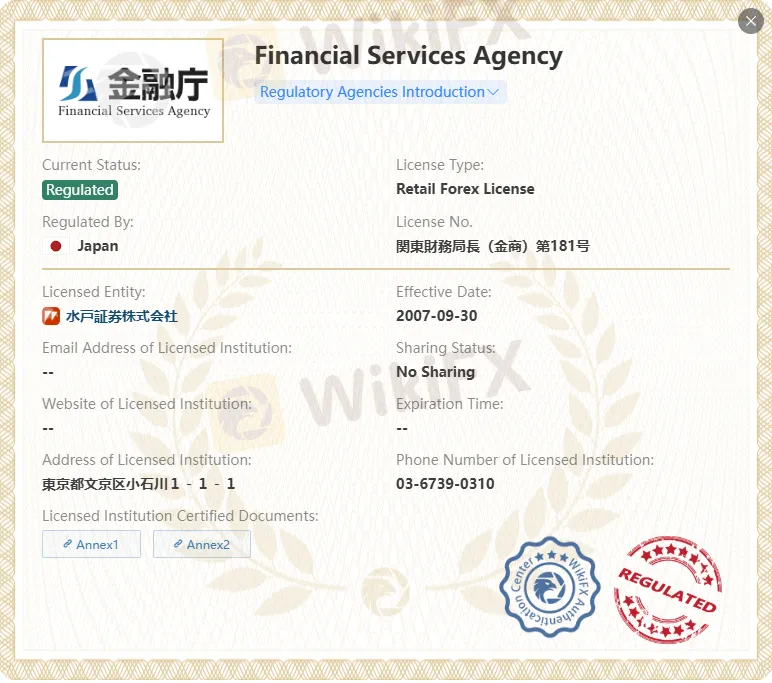
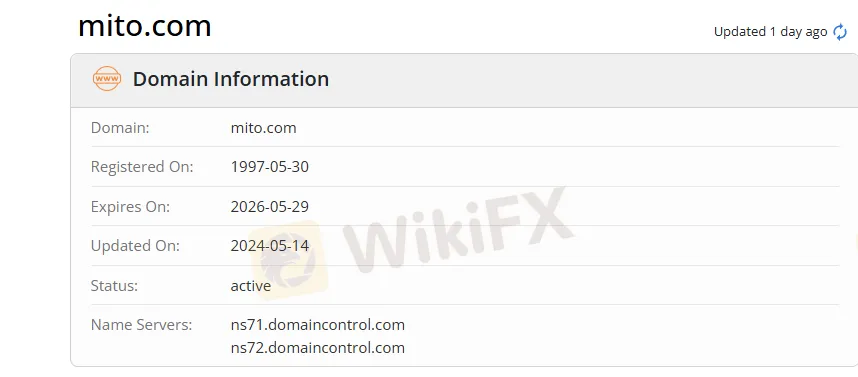
MITO nagbibigay ng mga Stock, Bond, at ETF.
| Mga Tradable na Kasangkapan | Supported |
| Bonds | ✔ |
| Stocks | ✔ |
| ETFs | ✔ |
| Forex | ❌ |
| Commodities | ❌ |
| Indices | ❌ |
| Cryptocurrencies | ❌ |
| Options | ❌ |
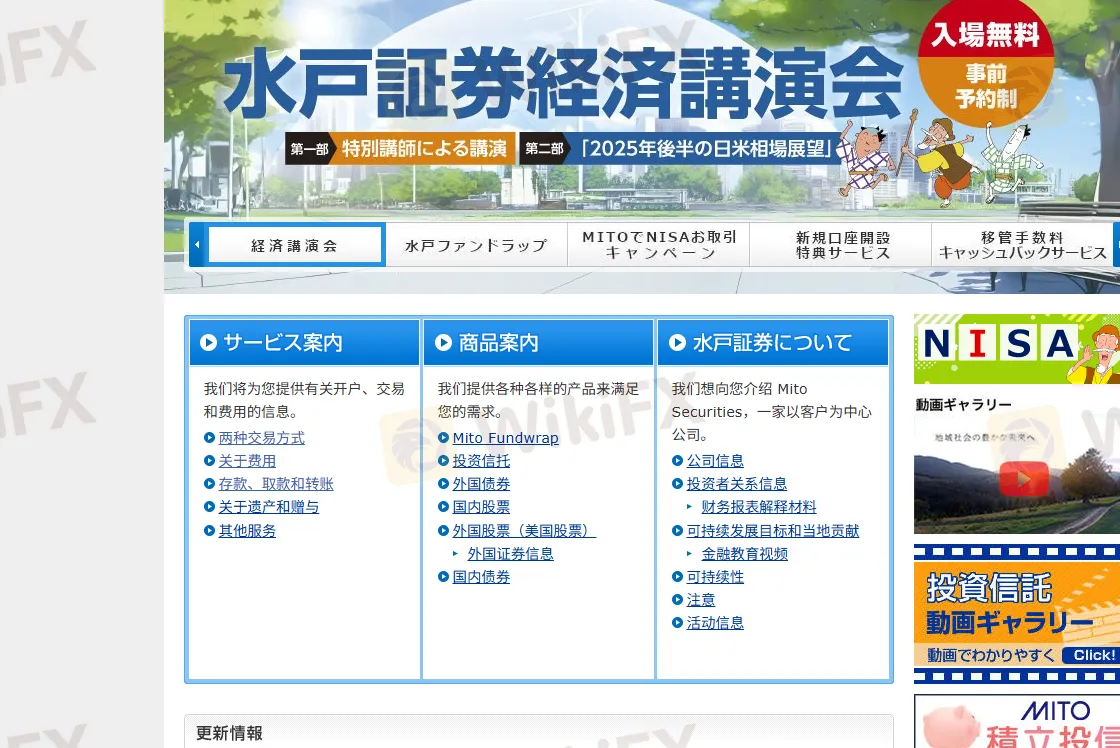
| Platform ng Paggawa ng Kalakalan | Supported | Available Devices | Angkop para sa |
| ✔ | / | / | |
| ✔ | / | / | |
| MT5 | ❌ | / | Experienced trader |
| MT4 | ❌ | / | Beginners |
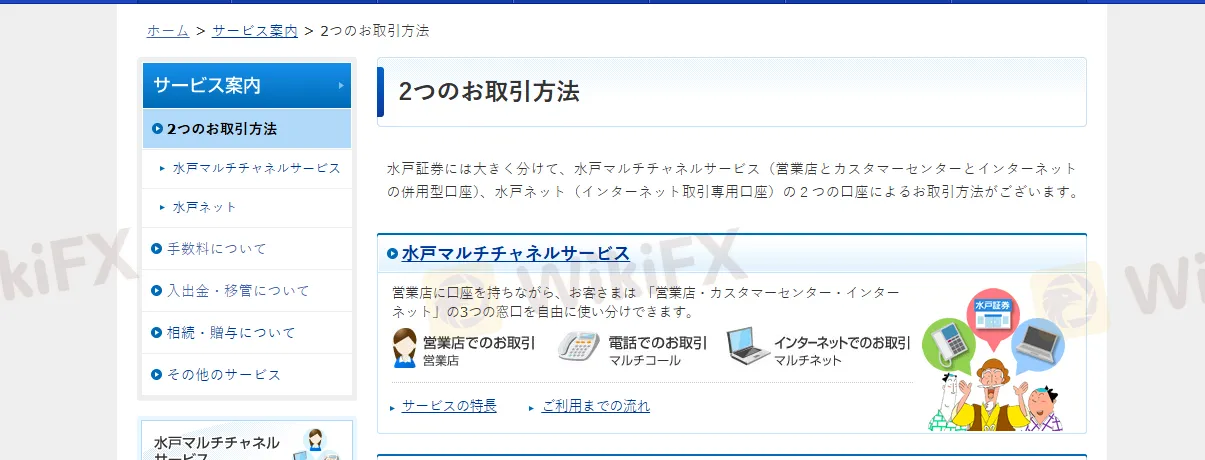
Para sa mga paglilipat ng dayuhan na pera, ang mga bayad sa deposito at pagpapadala ay inilalagak ng Customer (aktwal na bayad).
Para sa mga transaksyon sa pamamagitan ng Mito Net, lahat ng bayad sa paglilipat na binayaran ng customer sa MITO ay inilalagak ng MITO, at lahat ng bayad sa paglilipat na binayaran sa customer ay inilalagak ng MITO.
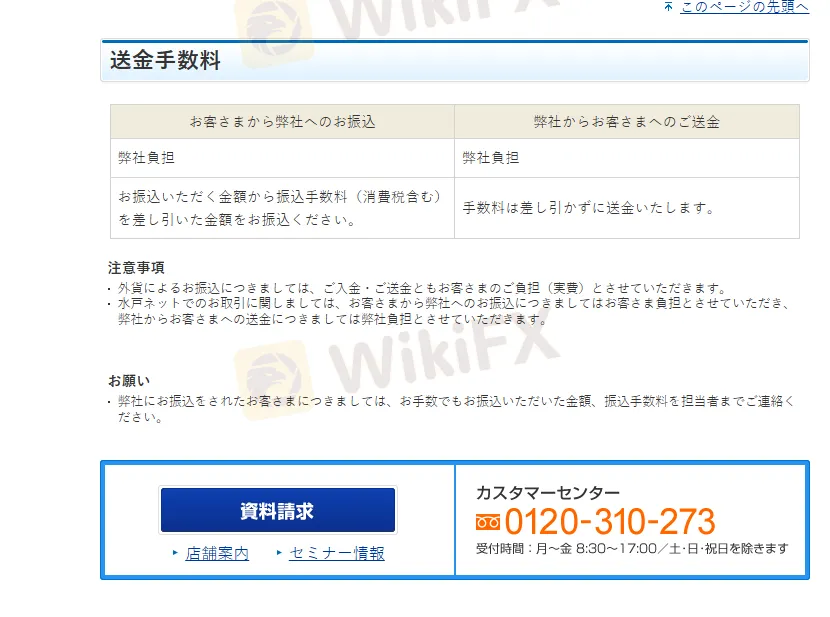

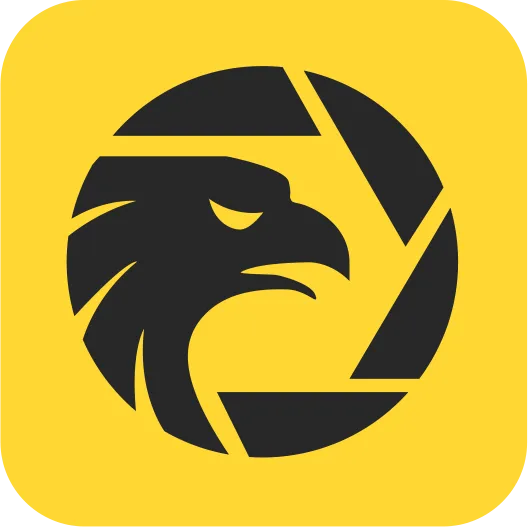
As an experienced trader, I rely heavily on clear and accessible information regarding trading costs, especially when considering a new broker. With MITO, I noticed several limitations that are quite important for anyone focused on trading indices like the US100. First and foremost, MITO does not offer indices as tradable instruments. According to their official profile, MITO strictly limits clients to stocks, bonds, and ETFs, with no mention or support for indices, commodities, forex, or cryptocurrencies. This restriction directly impacts my ability to assess or estimate the total trading costs for something like the US100, since the instrument itself is unavailable on MITO’s platforms. Moreover, the lack of MT4 or MT5 access and the absence of a demo account amplify my concerns, as these features usually provide the transparency and analytical capabilities I expect when evaluating trading conditions, including spreads, commissions, and swap rates. Given these facts, and understanding that MITO operates under FSA regulation in Japan with a long-standing presence, I would advise caution if your primary objective is to trade index products. For me, selecting a broker that directly lists the products I wish to trade is a fundamental requirement.


In my personal assessment as someone who takes broker selection very seriously, I found that MITO does not currently offer a free demo account. For an experienced trader like myself, this is a significant limitation. Demo accounts are an essential tool not only for beginners to practice strategies risk-free but also for seasoned traders to familiarize themselves with a broker’s trading environment and platform nuances. The absence of a demo account means I cannot test MITO’s proprietary trading platforms (MITO Multichannel Services and MITO Web) before committing real funds, which raises questions about getting comfortable with order execution and platform reliability in a live setting. Furthermore, MITO does not support widely-used platforms like MT4 or MT5, which makes the lack of a demo feature even more cumbersome. There’s also no indication of any restricted access or time-limited trial; the demo option is simply not provided. From a risk management and due diligence perspective, this caused some hesitation on my part. Whenever I'm evaluating a broker, the ability to conduct hands-on testing before committing capital is something I strongly value—so MITO’s policy here is a noteworthy drawback for me. I recommend that anyone considering MITO thoroughly weigh this limitation, as real-money trading without preliminary practice increases exposure to unnecessary risks.


In my experience evaluating brokers like MITO, it's crucial to approach withdrawal processes with care, especially when there is limited public information. MITO is a long-established, FSA-regulated company in Japan, which generally reassures me about their basic trustworthiness and adherence to regulatory standards. However, their website and available resources clearly state that all deposit and withdrawal fees, especially for foreign currency transfers, are borne by the customer, which can add to the total cost and possibly affect the speed of the transaction if intermediary banks are involved. For transactions through their Mito Net system, it’s indicated that transfer fees paid to and from MITO are covered by the broker, which is somewhat reassuring, though details about specific timeframes are not provided. In the absence of an official, clearly published withdrawal timeframe, I remain cautious and base my expectations on standard practices for brokers operating under Japanese FSA oversight. Typically, bank account withdrawals from regulated Japanese brokers may take anywhere from one to several business days, depending on both the bank’s processing speed and the time of request. There’s no mention of e-wallet support as an option, so I would not assume such methods are available. Overall, while regulation by the FSA gives me some confidence, I would only move larger amounts after personally confirming timely processing with small, initial withdrawals. When time or certainty is a priority, I always recommend direct contact with the broker’s customer support to clarify their current withdrawal process and expected duration.


In my personal experience analyzing brokers, transparency with deposit and withdrawal fees is essential for trust and long-term use. With MITO, I noticed that for foreign currency transfers, MITO clearly states that all deposit and remittance fees are the responsibility of the customer—these are actual, standard fees rather than hidden or arbitrary charges. However, for transactions handled through Mito Net, MITO covers all transfer fees incurred both to and from a client’s account. From what I see, MITO is straightforward about who bears the cost under each scenario. I did not find any evidence of undisclosed or hidden fees for deposits and withdrawals based on their official descriptions. That being said, because MITO operates mainly within Japan and offers domestic platforms, it’s always wise for me to double-check the fine print before making a transaction, especially if transferring internationally. Regulatory oversight from Japan’s FSA adds a degree of comfort regarding fee transparency. Still, as a cautious trader, I always confirm the fee structure with customer support before making significant transfers to avoid surprises, especially since international transfers can involve intermediary banking costs that are outside a broker’s control. For me, MITO’s approach seems reliable, but I never assume zero hidden costs without direct verification.



Mangyaring Ipasok...


 TOP
TOP 

Chrome
Extension ng Chrome
Pandaigdigang Forex Broker Regulatory Inquiry
I-browse ang mga website ng forex broker at tumpak na tukuyin ang mga legit at pandaraya na broker

I-install Ngayon